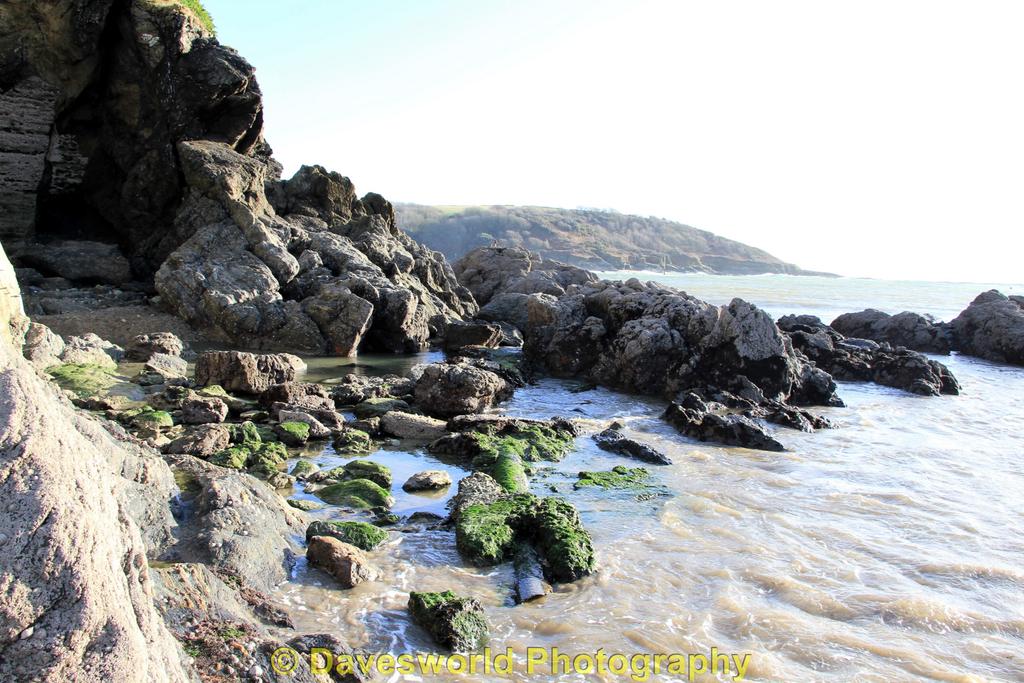Post by Dave on Jan 1, 2018 16:12:33 GMT
Salcombe Castle, North & South Sands 1st January 2018
I was a bit disappointed yesterday that my planned walk was unable to go ahead, the weather played a big part in that. But with the promise of at least a few hours of sunshine today I was soon looking where I could go out and do a photo shoot.
I have been to Salcombe a number of times before but never to North or South Sands and with the promise of a ruined castle thrown into the bargain my mind was made up.
Ever since I fell in love visiting ruined castles I soon developed a strong dislike for Oliver Cromwell’s Parliamentarians who were responsible for turning so many fine castles into the ruins we see today. But after catching the end of a film that was all about Oliver Cromwell I changed my mind slightly.
When you read the history of Salcombe Castle below you will learn it was the last Royalist stronghold of the English Civil War. I wonder why that was? Maybe due to its small size it was not considered that important, or may as was the case today the tides made it hard to get too.
I checked the tide times today and at low tide I should have been able to walk to the base of the castle, but that was not the case which rather disappointed me. I was very surprised how many people were at North Sands, the car park was full and it was so lovely to see so many families out having fun together.
I decided to walk around to South Sands and soon found myself walking up a steep narrow road. It then went down even more steeply meaning I knew in advance my legs would suffer later.
From South Sands I continued my walk up to Overbeck's which is a National Trust property but sadly it was closed. I started my walk back to North Sands in the hope the tide might have gone out a bit further so I could get up close to the castle. But it was coming back in again with some waves big enough to temp some local surfers into the sea.
I was standing some fifteen feet away from the breaking waves and trying to get a shot of a wave breaking over the rocks at the sea side of the castle. The next week I knew I was up to my knees in the sea as unknown to me the waves there can come in very fast.
I looked behind me and I was ten feet plus from the end of the beach and I turned and headed for dry land. I really enjoyed my afternoon and it just goes to prove there are still so many places that are local to me that I have not yet been too.
History
Musket and gunpowder smoke are not things you’d ordinarily associate with sunny Salcombe, but delve deep enough into the town’s archives and you’ll discover the battle for Salcombe Castle, the last Royalist stronghold of the English Civil War.
Leading the brave resistance against Oliver Cromwell’s Parliamentarians, was Sir Edmund Fortescue, who originally rebuilt the castle to ward off French and Spanish pirates at a cost of £135 6s 11d, and named it “Fort Charles”.
Today, this handsome ruin still sits at the mouth of Salcombe Harbour, just off the beach at North Sands, on a rocky outcrop passable on foot at low tide. It was here that Sir Edmund, Sheriff of Devon, and his garrison of eleven officers, forty-three non-commissioned troops, a chaplain, a surgeon, and two laundresses, defended the castle in the name of the king.
Inventory records show the besieged Royalists survived on thirty-six hogsheads of meat, ten hogsheads of punch, six hundred weight of tobacco, and ten casks of cider. Surrounded by a battery of three guns, Sir Edmund’s stubborn resistance lasted from January 1645 up until May 1646.
When Sir Edmund finally capitulated it was under the “favourable terms” of Colonel Ralph Weldon, commander of Plymouth, who allowed the whole of Sir Edmund’s garrison to march out of the fort “unmolested” to the sound of pipe ‘n’ drum.
Upon his marching orders, and having stuck to the rock like a limpet for all of sixteen gruelling months, Sir Edmund refused to hand over the keys to the fort, and so they remained in the possession of his trusted descendants.
Barred from all of his majesty’s councils, Sir Edmund remained defiant to the terms of parliament up until his death in 1647, aged thirty-seven. His portrait was hung in his family home at Fallapit House, near East Allington, but his most famous legacy remains in the ruins of Salcombe Castle, a monument to the very last of the Royalist enclaves.


























Below a video of the castle from above, hard to believe it was big enough for all the people to live in that defended it
